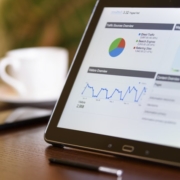Google Analytics is a very valuable tool for business owners. More than just numbers, here are some ways you can enhance your campaigns by using analytics.
Get to know your web visitors
Enhance user experience by understanding who is visiting your website. By monitoring who your customers are, you can adapt your site to match their needs. If you find that most of your web visitors are visiting on mobile devices, then you can make sure your site is more mobile friendly, so these visitors are more likely to convert. You can also view reports for age and interest categories, a useful tool as you can use this data to adapt your site to make the content more relevant to these users.
Understand your best content
Viewing metrics such as bounce rate which shows how many people left your site after viewing only one page, page sessions and seeing which individual pages have been popular can really benefit the overall usability of your site. If you are finding that certain pages are less popular, you can adjust the content so they mirror the more popular pages and therefore generate a better response. Understanding how your content works will really help to improve site engagement.
Helps with SEO
Google Analytics can help you to understand where your audience is coming from. You can link your account to Google Search Console which will show you what your audience is searching to get to your site. This data will allow you to adapt your content to include these terms.
To Check you are achieving goals
Goals are something that every business owner wants to establish in order to know they are making progress. Without data, you cannot tell if you meeting those goals. You can set goals directly in Google Analytics and measure how you are performing against them. It is also possible to track conversions so you can see how many newsletter signups you have as well as the results from your e-commerce store. If you have linked your Analytics account to your Google AdWords account, you can directly measure the return on investment you are getting from your ads by comparing your ad spend to your conversions.
It’s Free
You don’t have to pay anything to use this service. Collect all kind of data which will make your business more profitable and it’s totally free to use.
Want to monitor your Google Analytics data but don’t know how? Fear not, here at Cloud9 we have experts who can help you analyze data and meet your goals. Contact us for more info.


